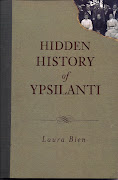 One kind reader recently asked which plants were popular in Ypsilanti's past. It's an interesting question. Perhaps there are fads in plants through the years just as there is in fashion. Dusty D does have a list of greenhouse plants for sale from many decades ago somewhere in my files. I'll try to find it. In the meantime, I can tell you about one plant that made the news more than once but which seems to have faded from favor. It made such an impression on me that I gave it its own file folder in my files. It is the night-blooming cereus.
One kind reader recently asked which plants were popular in Ypsilanti's past. It's an interesting question. Perhaps there are fads in plants through the years just as there is in fashion. Dusty D does have a list of greenhouse plants for sale from many decades ago somewhere in my files. I'll try to find it. In the meantime, I can tell you about one plant that made the news more than once but which seems to have faded from favor. It made such an impression on me that I gave it its own file folder in my files. It is the night-blooming cereus.The night-blooming cereus is a sort of cactus that looks, for most of the year, like a bundle of sticks. But on one night, usually around Memorial Day, it produces a fragrant flower that lasts for only a day or two. Then it's done. It goes back to looking like a bundle of sticks.
In the past, the blooming of the night-blooming cereus was a neighborhood occasion. Owners would invite friends over in the evening to glimpse this rare event. There is something innocent and touching about the vanished custom of inviting friends over to look at a short-lived flower. It even made the newspapers! Front page!
Here's a news article about the night-blooming cereus from July 14, 1922.
 "Quite a large number of the friends and neighbors of Mrs. Janet Wyckoff called at her home last evening to see the beautiful Night Blooming Cereus which it is her good fortune to own, and which had one blossom open last evening.
"Quite a large number of the friends and neighbors of Mrs. Janet Wyckoff called at her home last evening to see the beautiful Night Blooming Cereus which it is her good fortune to own, and which had one blossom open last evening."For a number of years Mrs. Wyckoff has had this plant and each summer that a blossom opend she most generously opens her home that others may enjoy its beauty with her.
"The original plant was given to Mrs. Wyckoff's aunt, Mrs. Mary Van Dusen by B. M. Damon who was the Michigan Central agent here for about twenty years, and under whose guidance the depot gardens were started and the greenhouse given to Ypsilanti. Under Mr. Damon's direction the gardens here became famous. He was a lover of flowers and in his own home had the Night Blooming Cereus from which a slip was teken and given to Mrs. Van Dusen. About eight years ago the original plant was frozen, but most happily Mrs. Wyckoff had taken a slip from it, and it is this slip, now grown to a good sized plant, which bloomed last evening. Mrs. Wyckoff has taken two more slips from this plant, lest anything should happen to it and the flower he lost.
 "The Night Blooming Cereus is a tropical plant, blooming in South America, Cuba and other tropical islands. It is not known where Mr. Damon's original plant came from.
"The Night Blooming Cereus is a tropical plant, blooming in South America, Cuba and other tropical islands. It is not known where Mr. Damon's original plant came from."Although there was but one blossom open last evening, its fragrance filled the porch where Mrs. Wyckoff has placed the plant. The flower is of rare beauty and unusual form, the blossom growing out of the side of the long leaf. The blossom opens only in he night, and remains open only one evening. Today it hangs, limp and wilted, from the leaf out of which it grew.
 "As the evening progressed the blossom opened more widely until it reached its prime about midnight. The petals are pure white with a few pale pink ones on the outside. When the blossom first opened, it was somewhat the shape of a lily, but later the petals opened back, revealing more clearly the beauty of stamen and pistil formation.
"As the evening progressed the blossom opened more widely until it reached its prime about midnight. The petals are pure white with a few pale pink ones on the outside. When the blossom first opened, it was somewhat the shape of a lily, but later the petals opened back, revealing more clearly the beauty of stamen and pistil formation."This is the third year that the present plant has bloomed. Mrs. Wyckoff poinetd out a small white spot on one of the leaves which she said would develop into a blossom in five or six weeks and she expects another bloom later in the summer.
"So far as is known, this is the only plant of the species in Ypsilanti."



















































